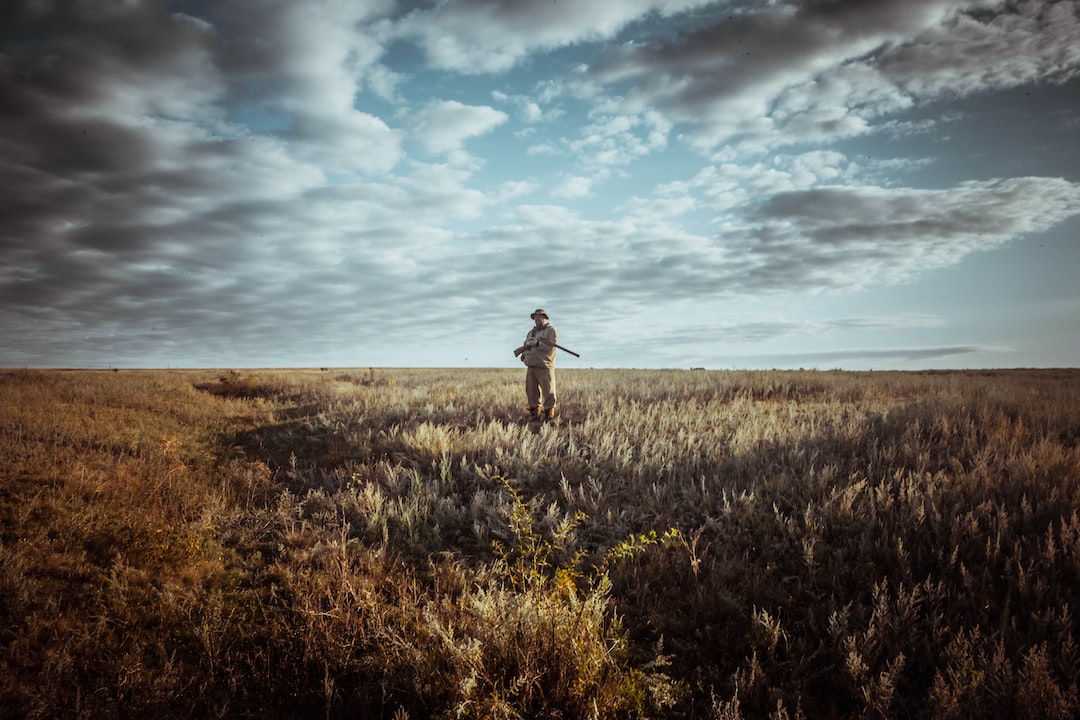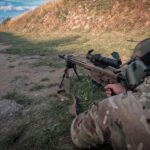Rifle covers are an essential piece of gear for any rifle hunter.
Shielding your firearm from the weather and brush is of utmost importance while in nature, and possessing a dependable cover can be what stands between success or failure.
But who invented these clever little devices? What quick release features do modern rifle covers offer? Why is it important to protect your gun with one? And what kind of care and maintenance should you follow to keep it in good condition?
Read on as we explore these questions about rifle covers.
What are Rifle Covers?
A rifle cover is a protective covering designed to shield your firearm from the elements.
It’s typically made of heavy-duty fabric, such as canvas or nylon, and can come in various sizes and shapes to fit most firearms. A rifle cover serves to safeguard your firearm from dust, precipitation, snowfall, sunlight damage and other external elements that could be detrimental if left unchecked.
There are several types of rifle covers available on the market today. Some are simple slip-on covers with drawstrings for easy removal while others have more complex designs with straps and buckles for added security when transporting or storing your gun.
You can also find tactical models that feature additional pockets for ammunition or accessories like scopes and cleaning kits.
The advantages of having a rifle cover are multiple, but mainly involve shielding from wear and tear due to rough weather conditions as well as avoiding dust and other particles which can cause rusting or corrosion if not taken care of.
Additionally, they provide an extra layer of safety by helping you keep track of where your gun is at all times, especially important if you’re hunting in unfamiliar territory. Finally, they help reduce noise levels when shooting outdoors so you don’t disturb wildlife or alert potential threats nearby.
Rifle covers are a great way to protect your rifle from the elements, and their use has evolved over time. Tracing the trajectory of rifle covers since their inception, let us explore how they have developed and adapted over time.
Evolution of Rifle Covers
Today, there are many popular brands and models of rifle covers available on the market. Some of the most well-known names include Magpul Industries, Blackhawk., Voodoo Tactical, ProMag Industries, and Butler Creek. Each brand boasts a distinctive aesthetic and an array of characteristics that distinguish them from the competition.
In addition to different styles and designs, modern rifle covers also come with quick release features for easy installation or removal from your firearm without having to take apart any parts or components. This feature permits you to promptly gain access to your hunting gun, safeguarding it with a cover while not being used.
The material used for these covers has seen significant improvement over time, now including waterproof fabrics such as neoprene or nylon along with breathable mesh panels. This provides added comfort during extended periods of wear in hot weather conditions that are common in rural western United States, a popular destination for hunters and outdoors recreation enthusiasts alike.
From the invention of the first rifle cover to today’s modern quick release features, there is a wide range of options available for hunters and outdoors enthusiasts looking to protect their rifles. Let’s take a look at some of these popular quick release features now.
Quick Release Features on Modern Rifle Covers
Quick Release Features on Modern Rifle Covers are a great way to make sure your rifle is always protected and ready for use. Quick-release features make it a breeze to take off the rifle cover, so you can be ready for action in no time.
What is a Quick Release Feature?
A quick release feature is an attachment point or mechanism that allows the user to quickly detach the cover from their firearm without having to manually unscrew any bolts or screws. This feature permits users to rapidly detach the covering from their gun providing a hassle-free and expeditious solution for those in need of immediate access, even for rifles with bi-pods.
Popular quick release features include buckles, snaps, zippers, Velcro straps, and even magnets.
The primary benefit of using quick release features on rifle covers is speed; being able to rapidly remove the cover when necessary can save valuable time in hunting or shooting sports competitions where every second matters.
Furthermore, these types of attachments also help keep dirt and debris away from your gun since they provide a snug fit around the weapon itself rather than relying only on manual tightening with screws which can often become loose over time due to regular use or vibration while traveling long distances with firearms inside vehicles such as trucks or ATVs.
Popular Quick Release Features on Modern Rifle Covers include:
- Allen Company’s Shotgun/Rifle Cover with adjustable elastic bands and heavy duty nylon material;
- Browning’s Tactical Gun Case featuring zipper closures and hook & loop fasteners;
- Plano Molding’s All Weather Tactical Gun Case reinforced at the corners plus two locking points secured by combination locks;
- Bulldog Cases Deluxe Scoped Rifle Case utilizing four heavy duty buckle straps for extra security;
- Boyt Harness Company’s Soft Gun Cases made from durable Cordura fabric, complete with two adjustable shoulder straps and one belt loop strap at each end for easy transportability;
- Blackhawk Products Group’s Discreet Weapons Bag designed specifically for law enforcement personnel, equipped with dual pull tabs plus three external pockets providing additional storage space if needed.
No matter the quick-release choice you make for your rifle cover, it is essential to pick one that meets your demands and gives you confidence in knowing your gun is securely safeguarded while still allowing convenient access when needed.
A quick release feature is a type of fastening system that allows for the easy and secure attachment and detachment of rifle covers. It’s designed to make it easier to access your weapon quickly without having to fiddle with straps or buckles. Quick release features are becoming increasingly popular on modern rifle covers due to their convenience, reliability, and ease of use.
One advantage of quick release features on rifle covers is that they allow you to access your weapon in an instant when needed. This can be especially advantageous if you must act fast while hunting or participating in other outdoor pursuits where speed is paramount.
Additionally, these features also provide extra security by keeping your gun securely attached until you decide it’s time to remove it from its cover.
Having a quality rifle cover with quick release features is essential for protecting your gun from the elements and ensuring it remains in top condition. Exploring the necessity of safeguarding one’s hunting rifle with a cover, let us delve into why such protection from environmental elements is critical.
Why it is Important to Protect Your Rifle from the Elements with a Cover
It is important to protect your rifle from the elements with a cover for many reasons. Weather can cause serious damage to your gun if it is not properly protected.
Without adequate safeguarding, rust and corrosion can begin to form on the metallic components of your rifle, compromising its precision and functioning. Moisture can also cause wood stocks to swell or warp, making them difficult to use and decreasing their value.
A quality cover can shield your firearm from the environment, preserving it against dampness, dust particles, dirt and other unwanted substances that could harm its elements in time. Covers are designed specifically for rifles so they fit snugly around them while still allowing you access to all of its features such as scopes or sights without having to remove it completely.
The material used in covers also helps keep out UV rays which can fade paint jobs or markings on guns over time.
Rainfall and humidity are two of the most common weather conditions that can cause damage to firearms if left unprotected outdoors for extended periods of time.
Rainwater contains minerals which, when exposed long enough, will corrode metal surfaces such as barrels or triggers leading to decreased accuracy due to poor alignment between moving parts. In addition, rusting away at any bluing applied onto steel components decreases their aesthetic appeal significantly over time.
Humidity causes wood stocks to swell up making them harder handle accurately while shooting because they no longer fit perfectly into one’s shoulder pocket when aiming down range – ultimately affecting accuracy negatively here again.
What Kinds of Damage Can Occur Without Proper Protection?
Rusting away at metal surfaces reduces their structural integrity causing weak spots where pieces may break off during operation (like firing pin springs). Wood stocks absorb moisture causing warping which affects how well they fit against one’s shoulder pocket when aiming down range thus reducing accuracy once more – not only does this make handling more difficult but it also devalues antique firearms significantly too.
Paint jobs may fade due exposure ultraviolet radiation emitted by sunlight so even though these won’t affect performance directly they do reduce visual appeal drastically after prolonged exposure outdoors without protection.
A quality cover helps protect your gun from the elements by keeping out rainwater and humidity while blocking harmful UV rays from fading paint jobs or markings on guns over time. It is designed specifically for rifles so it fits snugly around them while still allowing access to all features such as scopes or sights without having to remove it completely.
This ensures optimal performance levels remain intact throughout years of usage, regardless of what type of terrain is being hunted upon – whether wet marshy ground or dry dusty desert land alike.
A quality rifle cover is essential to protecting your gun from the elements and preserving its condition for years to come. Now that you’re aware of the significance, let’s delve into how to maintain your cover appropriately so it can keep on performing its duty.
Care and Maintenance for Your Rifle Cover
It is important to properly care for your rifle cover in order to ensure it lasts as long as possible. Cleaning and storing your cover correctly will help extend its life, while avoiding common mistakes can prevent damage from occurring.
Cleaning and Storing Your Cover Properly:
The first step in caring for your rifle cover is cleaning it regularly. This should be done with a mild soap and water solution, followed by drying the material thoroughly before storage.
It’s also important to store the cover away from direct sunlight or extreme temperatures that could cause fading or cracking of the material over time. To protect the cover from moisture and to facilitate air flow, a breathable material like canvas or cotton should be utilized if it is being stored for an extended period.
Tips for Extending the Life of Your Cover:
To further protect your rifle cover, consider using a waterproof spray treatment every few months which will help repel dirt and water from sticking to the surface of the fabric.
Additionally, if you are carrying your gun outdoors frequently then investing in a quality case specifically designed for transporting firearms can provide extra protection against dust and debris buildup during transport.
Finally, try not to leave any sharp objects near where you store your rifle covers as these can easily tear through even high-quality fabrics over time if left unchecked.
One mistake many people make when caring for their rifle covers is leaving them exposed outside without any form of protection against rain or snowfall which can quickly lead to mold growth on wet surfaces if left unchecked.
Additionally, never use harsh chemicals like bleach when cleaning your covers as this could weaken fibers within the fabric causing premature wear-and-tear over time. Lastly, always remember that although most modern materials used in today’s rifle covers are designed with durability in mind; they still require regular maintenance just like any other piece of outdoor gear so don’t forget about them after purchase.
FAQs in Relation to Rifle Covers
What are the benefits of using a rifle cover?
A rifle cover is an essential piece of gear for any hunter. It provides protection from the elements, keeps dirt and debris out of your firearm, and helps to maintain its accuracy. The cover also prevents scratches or dings that can occur when transporting a rifle in the field. Additionally, it reduces noise when handling a gun in areas where game animals are present.
Finally, using a rifle cover can help keep you safe by reducing the chances of accidental discharge due to dust or other foreign objects entering the barrel while hunting.
What materials are rifle covers typically made from?
Rifle covers can be crafted from an assortment of substances, such as neoprene, canvas, leather and nylon – all possessing their own unique properties. Nylon is lightweight and durable, making it ideal for covering rifles in all types of weather conditions which is why it is found in many styles of hunting boots. Canvas is also a popular choice due to its breathability and water-resistant properties. Neoprene is a great option for safeguarding against the elements while remaining lightweight and pliable.
Finally, leather provides superior protection from the elements but can be more expensive than other options. No matter which material you choose for your rifle cover, make sure it fits securely around your firearm to ensure maximum protection.
Are there different sizes of rifle covers available?
Yes, there are different sizes of rifle covers available. Depending on the size and type of rifle you have, there are a variety of covers that can be used to protect your weapon from the elements. Covers come in all shapes and sizes, ranging from small tactical cases for carbines to large soft cases for larger rifles. Some even feature additional pockets or compartments for extra gear like magazines or optics.
No matter the size or shape, ensure that your cover is tailored to fit your gun for optimum protection from dust, moisture and other environmental factors.
How do you properly attach a rifle cover to your firearm?
To do so, start by laying out the cover and aligning it with the barrel of your gun. Then, use straps or bungee cords to secure the cover around the buttstock and barrel of your gun. Ensure that the fastenings are adequately snug, so as to keep the cover firmly in position without being overly tight – this could lead to harm of your gun.
Finally, check for any loose ends or gaps between where you have secured the cover and make adjustments as needed. With these steps followed correctly, you can be sure that your rifle will remain safe from dirt, dust, moisture and other environmental hazards while still allowing easy access when needed.
Are there any special considerations when choosing a rifle cover for hunting in wet weather conditions?
Yes, there are special considerations when choosing a rifle cover for hunting in wet weather conditions. It is important to choose a cover that is waterproof and breathable so moisture does not accumulate inside the cover.
Additionally, look for covers with taped seams and drawstrings or elastic bands to ensure the tightest fit possible around your rifle.
Finally, ensure the fabric utilized is tough enough to withstand inclement exterior conditions like precipitation, snowfall, gusts and UV rays. With these considerations in mind you can be confident that your rifle will stay dry and protected while out on your next hunt.
Conclusion
Not only do they protect your rifle from the elements, but they also help keep it safe and secure while you’re out in the field. With quick release features on modern rifle covers, you can easily access your weapon when needed without having to fumble around with straps and buckles.
Taking care of your rifle cover is just as important as storing your firearms at home; regular maintenance will ensure that it continues to provide reliable protection for years to come. So don’t forget about those all-important rifle covers.



